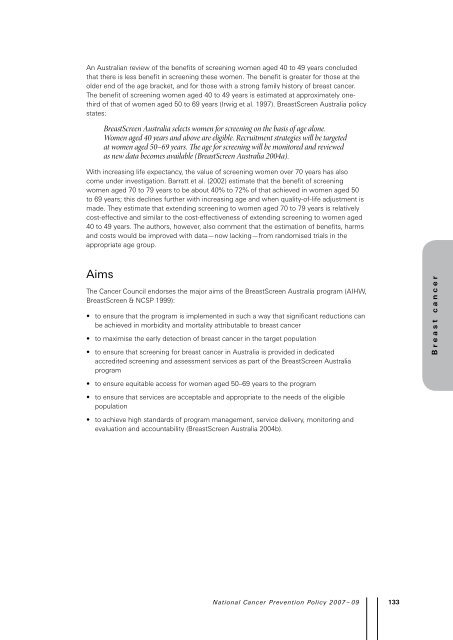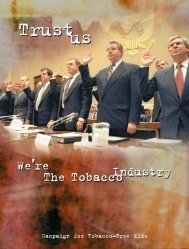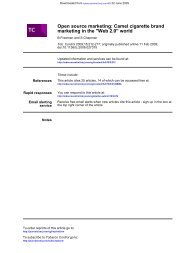National Cancer Prevention Policy - Tobacco Control Supersite
National Cancer Prevention Policy - Tobacco Control Supersite
National Cancer Prevention Policy - Tobacco Control Supersite
Create successful ePaper yourself
Turn your PDF publications into a flip-book with our unique Google optimized e-Paper software.
An Australian review of the benefits of screening women aged 40 to 49 years concluded<br />
that there is less benefit in screening these women. The benefit is greater for those at the<br />
older end of the age bracket, and for those with a strong family history of breast cancer.<br />
The benefit of screening women aged 40 to 49 years is estimated at approximately onethird<br />
of that of women aged 50 to 69 years (Irwig et al. 1997). BreastScreen Australia policy<br />
states:<br />
BreastScreen Australia selects women for screening on the basis of age alone.<br />
Women aged 40 years and above are eligible. Recruitment strategies will be targeted<br />
at women aged 50–69 years. The age for screening will be monitored and reviewed<br />
as new data becomes available (BreastScreen Australia 2004a).<br />
With increasing life expectancy, the value of screening women over 70 years has also<br />
come under investigation. Barratt et al. (2002) estimate that the benefit of screening<br />
women aged 70 to 79 years to be about 40% to 72% of that achieved in women aged 50<br />
to 69 years; this declines further with increasing age and when quality-of-life adjustment is<br />
made. They estimate that extending screening to women aged 70 to 79 years is relatively<br />
cost-effective and similar to the cost-effectiveness of extending screening to women aged<br />
40 to 49 years. The authors, however, also comment that the estimation of benefits, harms<br />
and costs would be improved with data—now lacking—from randomised trials in the<br />
appropriate age group.<br />
Aims<br />
The <strong>Cancer</strong> Council endorses the major aims of the BreastScreen Australia program (AIHW,<br />
BreastScreen & NCSP 1999):<br />
•<br />
•<br />
•<br />
•<br />
•<br />
•<br />
to ensure that the program is implemented in such a way that significant reductions can<br />
be achieved in morbidity and mortality attributable to breast cancer<br />
to maximise the early detection of breast cancer in the target population<br />
to ensure that screening for breast cancer in Australia is provided in dedicated<br />
accredited screening and assessment services as part of the BreastScreen Australia<br />
program<br />
to ensure equitable access for women aged 50–69 years to the program<br />
to ensure that services are acceptable and appropriate to the needs of the eligible<br />
population<br />
to achieve high standards of program management, service delivery, monitoring and<br />
evaluation and accountability (BreastScreen Australia 2004b).<br />
<strong>National</strong> <strong>Cancer</strong> <strong>Prevention</strong> <strong>Policy</strong> 2007 – 09<br />
133<br />
B r e a s t c a n c e r




